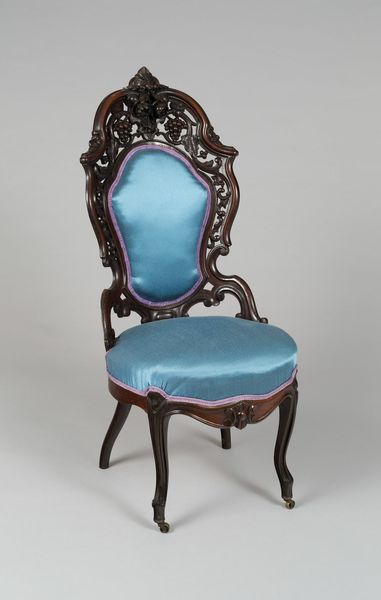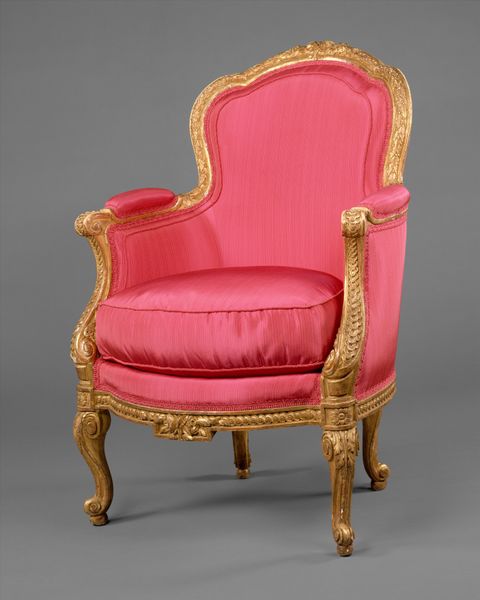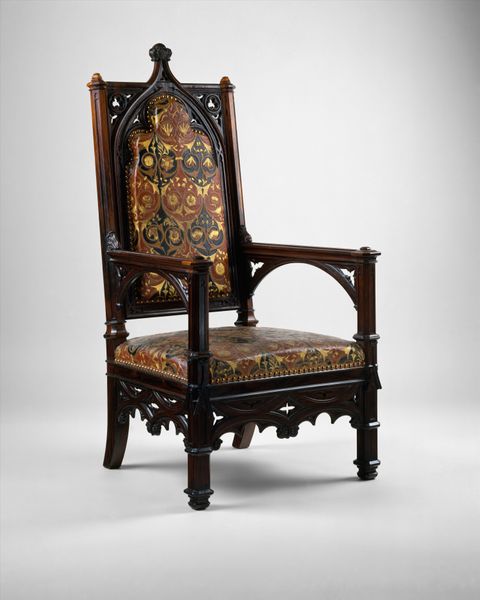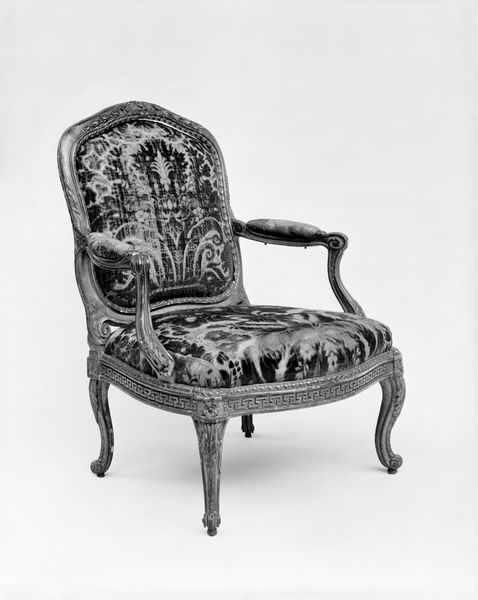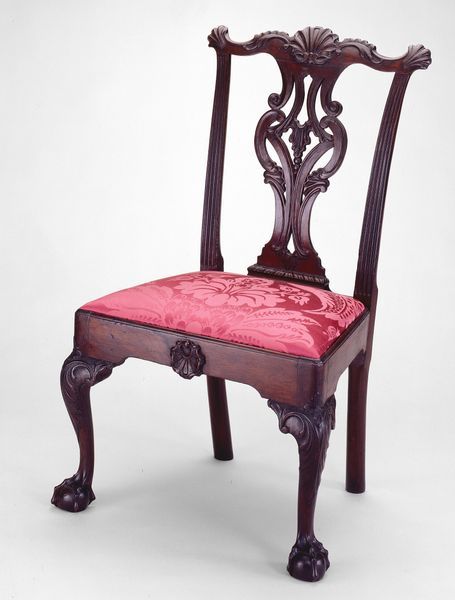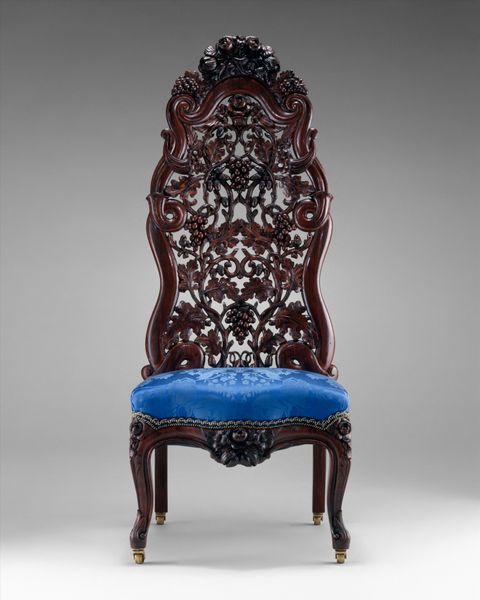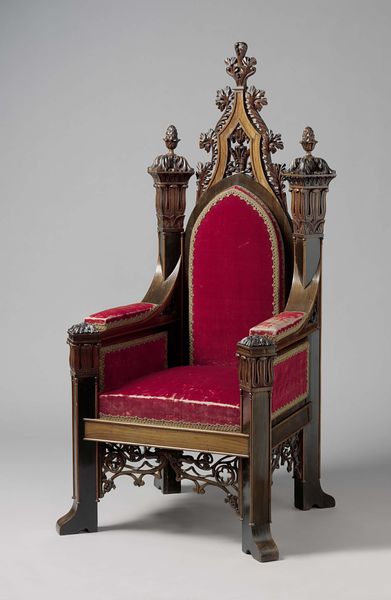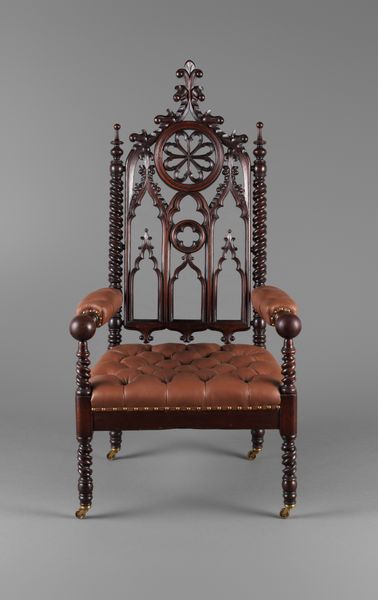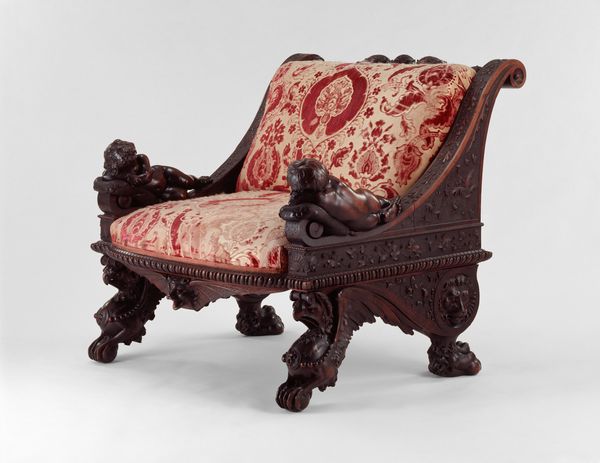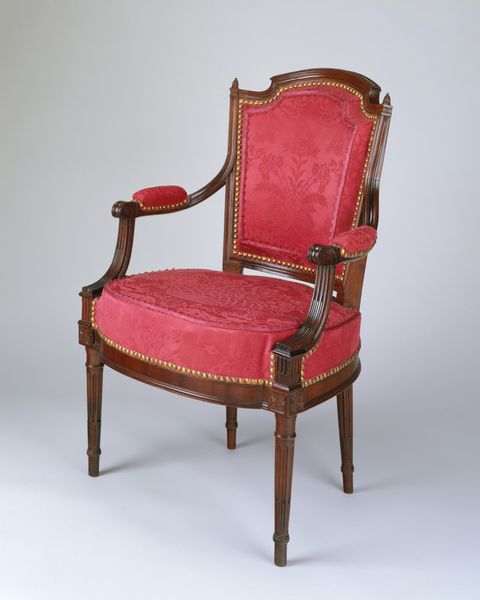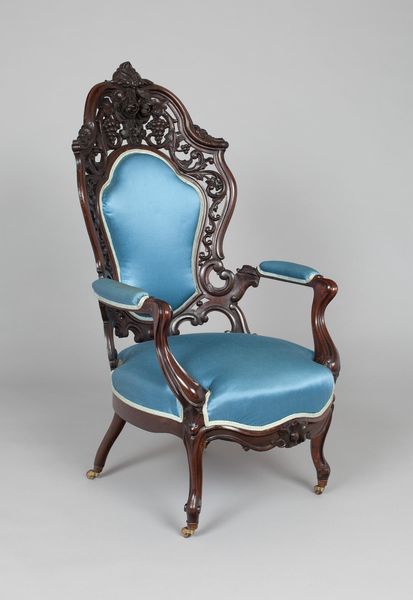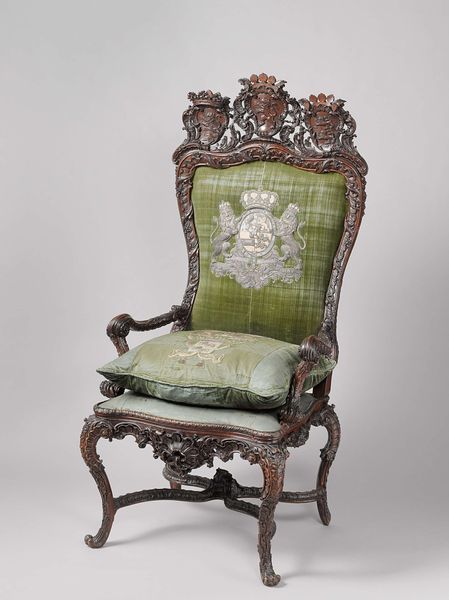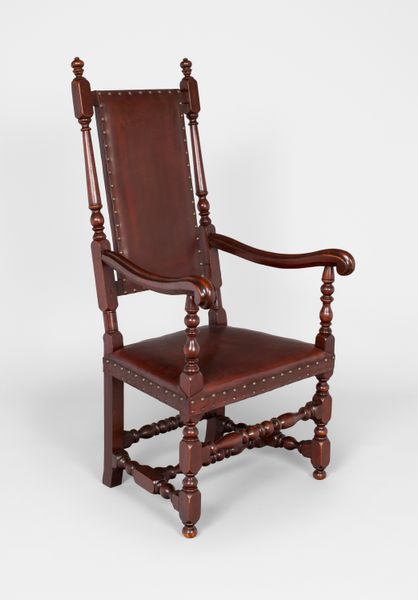
mixed-media, metal
#
portrait
#
mixed-media
#
metal
#
furniture
#
decorative-art
Dimensions: 139.7 × 61 × 66 cm (55 × 24 × 26 in.)
Copyright: Public Domain
Curator: This intriguing armchair, possibly crafted in 1869, comes to us from the hand of George Jakob Hunzinger, residing now within the collection of the Art Institute of Chicago. It is something of a mixed-media piece, prominently employing metal in its construction. Editor: My first impression is that it's a throne disguised as furniture. The severe black frame contrasts sharply with the plush, inviting crimson cushions, creating this fascinating tension. Curator: Absolutely, and it's important to consider Hunzinger’s role within the broader context of decorative arts at the time. These intricate, often bizarre, forms reflected a period of rapid industrialization and its impact on design aesthetics, particularly concerning societal expressions of class. The use of metal speaks volumes about that industrialization. Editor: And this piece challenges our ideas around domestic comfort. While the cushioning appears luxurious, the rigid frame suggests restriction. Who would have been sitting here? How did they view their place in the rapidly changing Victorian era? I'm drawn to how the contrasting elements could symbolize social divisions and hierarchies being questioned during that period. Curator: Precisely. Hunzinger, though initially working within established design frameworks, became quite experimental later in his career. Pieces like this one really challenged established tastes. Did the owners embrace or reject that critique through their acquisition of it? Editor: It makes you wonder about access too, given that most furniture produced in the time was a bit bland. This stands in direct opposition of that production line style, as it really stands out for its creative uniqueness. Owning it meant participating in a discourse, intentionally or unintentionally. I see a space for an intersectional feminist lens here, too: who was being forced to sit within its confines, perhaps silently agreeing with or defying its aesthetic commentary through their own bodies? Curator: That’s insightful, and these pieces often force us to reconsider the role of decorative arts as merely aesthetic objects, revealing a rich field of social commentary and class negotiation. They give a glimpse into the era's attitude towards progress and preservation. Editor: It’s a potent reminder that even something as seemingly functional as a chair can be a site of protest and resistance. The decorative arts have voices, we simply have to learn how to listen to their historical complexities, while considering its context through contemporary social commentary.
Comments
No comments
Be the first to comment and join the conversation on the ultimate creative platform.
